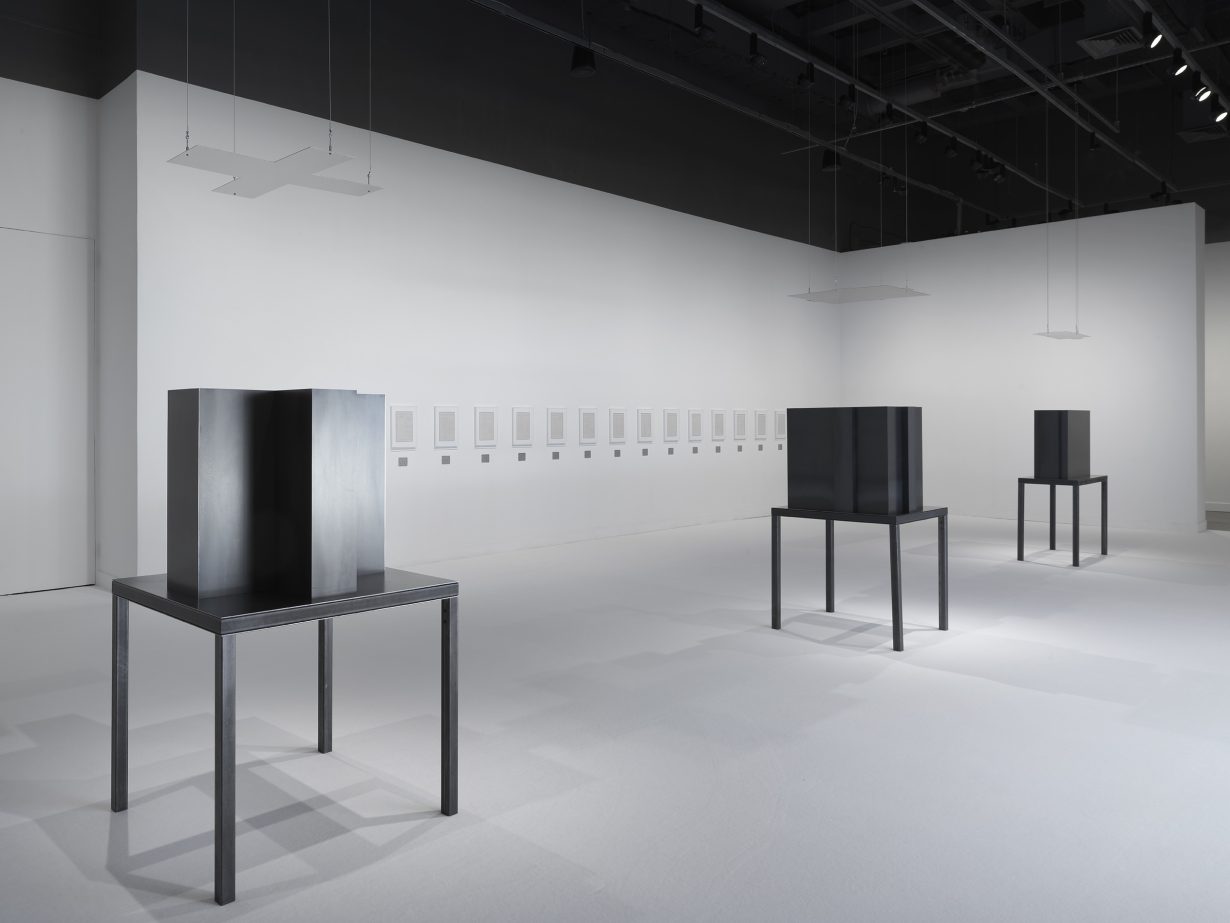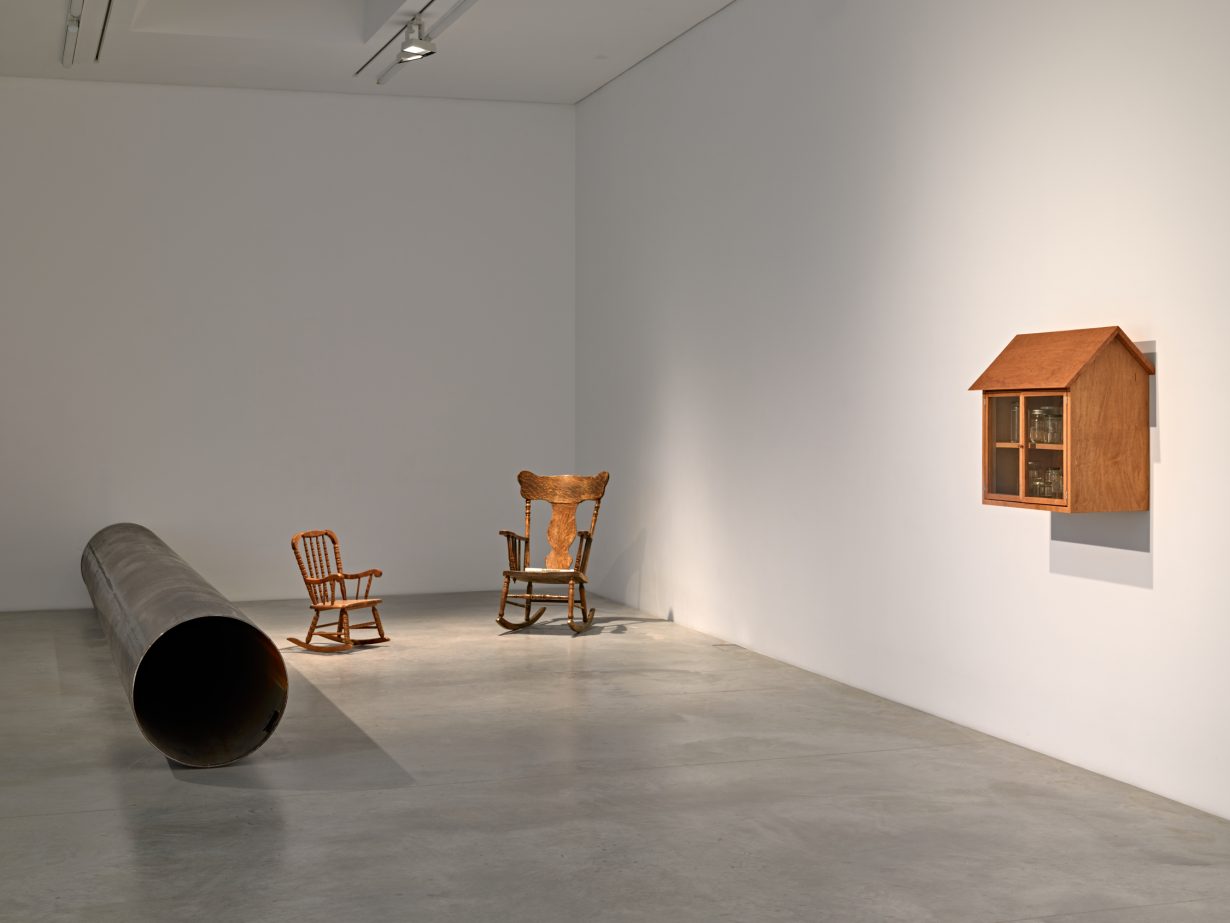On the artist’s subtle art of making things visible, and the even subtler art of allowing audiences to come to their own conclusions
Walking around an industrial area in Brooklyn’s East Williamsburg, Sung Tieu couldn’t help but notice all the construction that was taking place. The Vietnamese-born, Berlin-based artist (who was, at that time, developing a project for Amant, located in East Williamsburg) soon learned about the Metropolitan Natural Gas Reliability Project, colloquially known as the North Brooklyn Pipeline. Since 2017, multinational utility company National Grid has been developing an 11km pipeline in Brooklyn to transport fracked gas from Pennsylvania to New York, where fracking – a practice linked to a laundry list of deleterious environmental and health effects – has been banned since 2014. The pipeline, which passes through several predominantly Black and Latino neighbourhoods and has been funded by hikes in local utility rates, has been met with protests by community organisers and environmental groups. Local officials working with protesters were able to halt the pipeline at ‘stage five’ in its construction and impede the company’s plans to construct two liquid natural gas vaporisers at the line’s apex. (The caveat is for now: National Grid intends to resubmit its application.)
Tieu, who lives in a country where fracking has been almost entirely banned since 2017, was inspired to do a deep-dive into the contentious fracking practices that have exploded in the United States during the past two decades and established the nation as a global leader in shale-gas production. Her multipart installation on the topic, Liability Infrastructure (2023), is currently on view at Amant as part of her solo exhibition Infra-Specter. The show pairs Tieu’s exploration of fracking – in which physical infrastructures are viscous with meaning – with recent works that probe infrastructures of informational or psychological control. A solo show concurrently on view at MIT, Civic Floor, builds on Tieu’s investigations into a banal genre of psychological discipline: the hostility, violence and paranoia embedded in supposedly neutral bureaucratic spaces and architectures. Characterised by an austere metallic aesthetic, Civic Floor features minimalist sculptures that reference prison design alongside abstracted versions of US asylum applications.

Infra-Specter, a research-driven exhibition, encompasses sculpture, installation, video, works on paper, sound pieces and text-based works. The show overtakes two of Amant’s galleries and even spills into its interstitial spaces: mounted on external walls, four stainless-steel plaques (Proximity Relation, Body vs. Infrastructure, 2023) denote the exact distance of the viewer’s body – sometimes zero feet – to the North Brooklyn Pipeline. As it triggers the doubt that can accompany encounters with startling information in an age of alternative facts (and parafiction), the signage also makes the viewer’s propinquity to the pipeline keenly felt.
Philosopher Timothy Morton has described a ‘hyperobject’ as something – like global warming or capitalism – whose dispersion across time and space, and seepage into the fabric of our lives, is so great that it is difficult to comprehend. ‘We find ourselves inside [hyperobjects], part of them yet not part of them,’ Morton wrote in a 2013 article titled ‘Poisoned Ground’. Oil – of which fracked gas is part – is one such slippery hyperobject. Oil scrambles timescales; derived from ancient organic matter, it may well outlast humanity in the form of slow-to-decompose plastic. Oil is subterranean yet ubiquitous; as it is sought out beneath the Earth’s surface, it is also omnipresent in our day-to-day lives, heating our homes, fuelling our cars (while paving the roads we drive on) and manifesting in common consumer goods such as cosmetics, electronics, medications and clothing. This complex material poses a challenge to a conventional understanding of objects, wherein they are more bounded or static. By displaying disparate elements, occurrences and effects of fracking, Tieu aids viewers in acknowledging its multidimensional vastness. Staring down the barrel of one of her Reverberations (2023), a set of three large Hyundai Steel pipes internally embedded with speakers, gallerygoers may experience time and space as existing, as Morton put it, ‘radically inside objects, rippling through them’. Guided by FracTracker Alliance, a nonprofit that maps data related to oil and gas development, Tieu visited fracking sites located in Marshall County in West Virginia, and Greene County and Ryerson Station State Park in Pennsylvania. Her sound sculptures feature scrawled alphanumeric pipeline codes that allude to their former lives and the administrative systems through which they have travelled. Each pipe emanates sonic vibrations, ranging from a steady deep hum to intermittent jittering buzzes, recorded at the location specified in the work’s title – for example, Reverberations (Ryerson Station State Park, PA). As sites that feel distant or abstract breach the gallery space, the viewer may recall that Pennsylvania, West Virginia, New York and Ohio are materially connected via a massive shale formation – and that the decision to frack that formation is tied up with geopolitical concerns about energy dependence that implicate locales even further afield.

The pressurised liquid used in fracking involves chemical addi- tives that vary between companies and sites. While some states require disclosure of the chemicals used, which can be hazardous to human health, exemptions are made for ingredients deemed to be ‘confidential business information’. Tieu worked with data scientist Gary Allison and Physicians for Social Responsibility consultant Dusty Horwitt to analyse millions of entries on FracFocus, a nationwide registry of the chemicals that appear in fracking fluid. “All of this information is available online, but it takes so many steps to sift through it,” Tieu tells me over the phone. The title of Tieu’s visual distillation of chemicals, Mural for America (2023), suggests that she is working with material that is – or should be – public, and that her project is a kind of public art. Chilling in its scale, the mural consists of 1,900 gleaming plaques, each engraved with an ingredient found in fracking fluid, such as methanol (used in pesticides), benzene (a component of gasoline) and rapeseed oil (a cooking staple and industrial lubricant). Some plaques are marked with an identifying Chemical Abstracts Service (CAS) Registry Number, while others are labelled as ‘proprietary’ or ‘trade secret’. Exuding a bureaucratic severity, the standardised steel rectangles are arranged in orderly rows to form a massive grid, conjuring up post office boxes, safety deposit boxes and columbarium niches.

Across the gallery, Living, Drinking, Eating (2023) consists of a small wooden display case containing clear jars of water taken near fracking wells. In addition to requiring large amounts of water, fracking can contaminate – and has contaminated – surrounding groundwater through fluid leaks and spills, poorly constructed wells and wastewater mismanagement, as the us Environmental Protection Agency (EPA) reported in 2016. Superficially, Tieu’s water samples appear unremarkable. How viewers ultimately ‘read’ the water is inevitably influenced by the political leanings of the media that they typically consume and use to scaffold or reinforce their worldviews. The same EPA writeup, for example, can easily be cherrypicked to tell a different story: fracking advocates reporting for conservative outlets chose to highlight that the agency did not unearth ‘systematic’ contamination or enact new regulations in light of its findings.


Tieu says that Liability Infrastructure “is about fracking as a content, but it is also about language, and the crucial role that language plays in how we perceive information”. The open-ended series Newspapers 1969–ongoing (2017–) consists of faux news articles that the artist has written based on her research, sometimes adopting different viewpoints or tones in texts on the same topic. Part of this growing body of work, There Is Green Gas in Ohio State (2023), features a newspaper on a rocking chair (domestic furniture that is starkly incongruous with the institutional metal stools, bolted to gallery walls, that Tieu produced as exhibition seating). The faceup article describes a linguistic action with psychological and legislative consequences: in January 2023, Ohio Governor Mike DeWine signed a bill legally reclassifying natural gas – or, as some climate activists advocate for it to be called, methane gas – as ‘green energy’, enabling Ohio gas companies to meet environmental, social and governance (ESG) investing standards more easily. Next to the rocker on which the paper rests is a childsized chair, alluding to prevailing narratives around climate change that often seem to boil down to, as the American writer Maggie Nelson put it in On Freedom (2021), ‘the pabulum of reproductive futurism’; in this publication, Nelson notes that this has little to do with the arguably more demanding task of (quoting Documenta 14’s experimental public programme the Parliament of Bodies), ‘[taking] responsibility for those who are no longer, or not yet, here’. As Tieu highlights the media narratives and semiotic battles that swirl around fracking, and relays the results of her meticulous research on the topic, she also gives us other ways to think about or engage with the extractive practice: through feeling vibrations, or locating ourselves in space, or peering at water, or attempting to metabolise a display enumerating nearly 2,000 chemicals. Tieu’s approach to telling stories about fracking is not explicitly oriented towards the future, but rather towards making this far-reaching phenomenon – and its strategic obfuscation and lack of meaningful regulation – more clearly perceptible to viewers, which is perhaps a first step towards taking action so there can be a liveable future. “I reveal information”, says Tieu, “and let the audience decide how to take it from there.”
Sung Tieu’s solo show Civic Floor is at the MIT List Visual Arts Center, Cambridge (MA), through 16 July; her exhibition Infra-Specter is on view at Amant, New York, through 10 September
